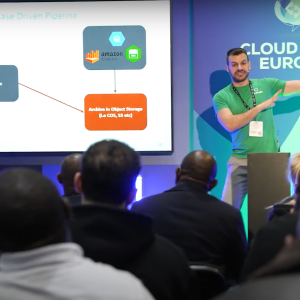
The growth of IoT technology has seen billions of new devices connected across the globe. These devices have allowed consumers, citizens, and businesses alike to enjoy the benefits of increased efficiency, ease of access, and even lower maintenance costs. But as the rate of IoT adoption continues to accelerate is the public sector in danger of falling behind?
IoT solutions have the potential to overhaul modern businesses, their applications can range from the regulation of small operations such as utility consumption to the management of enormous tasks employing machine learning to analyse gargantuan quantities of data. HCL estimates that approximately four in ten (38%) organisations are using IoT and a further 57% plan to use it in the future.
Gartner estimates that by 2020 there will be over 20 billion connected IoT devices, a four fold increase over 2015. Similarly, a new study by IDC predicts that IoT spending will skyrocket to $1.29 trillion in 2020. In a connected world a lack of connection can become a serious hindrance, something that already underfunded public services cannot allow to happen.

When asked whether the private sector was outpacing the public sector with its adoption of IoT solutions Dr Alex Bazin,Vice President Head of IoT at Fujitsu, told CBR: “Yes, I think in certain verticals it’s significantly outpacing the public sector and I think in other verticals maybe not so much.”
“I’m not convinced that there’s a huge difference in say the adoption in the construction industry between private sector construction and public sector construction. But I am aware of figures that say 50% of manufacturers in Europe have already adopted an IoT technology within their operations and I don’t think we’re anywhere near 50% penetration in other industries, certainly not in the public sector.”
A report from BI Intelligence anticipates that the top adopter of IoT solutions will be businesses, due to their innate need to lower operating costs, increase productivity, and expand to new markets with enhance product offerings. Whereas, Governments will come in second in part because of bureaucracy and also out of a need to have tried and tested methods before mass installation is possible.
Unlike a business, the public sector exists to directly serve citizens and so any perceived problem with the system makes the government directly responsible, something that no government wants. The ability of businesses to experiment and act with more versatility in their adoption allows them to find the most effective methods on smaller scale and in a shorter time frame.
Dr Bazin said: “When you have traditional public sector procurement rules which are right and proper, it means that projects need to be of a certain scale, a certain size and a certain maturity to procure that as a solution.”
“Whereas in the private sector I think we’re seeing a more agile take. Try and start off a small project on a slightly more informal basis, see what succeeds and grows and then scale that. That slightly different approach to procurement is driving a different approach to the market.”
Despite its seemingly slow adoption the IoT revolution has the possibility to save billions of pounds for the public sector. Oslo, one of the smartest cities in the world, currently employs 65,000 smart LED lights linked by 650 processing stations. These not only reduce energy use but can actually monitor the area to determine how bright they need to be, in foggy or lighter conditions they are able to become bright or more dim respectively.
Similarly in San Francisco a recent law states that all new buildings are required to have at least 15% of roof space dedicated to solar panels, a policy which California lawmaker, Senator Scott Wiener, wishes to become a state wide policy. Policies like these can not only reduce power consumption, but actually give back to the grid.
Limited though these applications are, Dr Bazin said: “I think the ability to manage cities more effectively to reduce the effects of air pollution, reduce congestion, plan cities more effectively, move people around cities more effectively, improve the quality of life within our cities, has huge potential benefits.”
“I think as a percentage of their overall operations maybe government won’t generate as much value as some of the disruptive businesses that are creating entirely new ways of engaging with their consumers, but in raw dollars and cents because of the scale of the public sector around the world, there is a huge saving to be had and a huge improvement in people’s lives to be had as well.”

The continually accelerating growth of the IoT industry certainly makes it seem as though this is the optimal solution going forward. A recent study from ARM found that 21% of businesses say that IoT has had a major impact on business in general so far, 25% say that IoT has sparked a wave of innovation thanks to data that gives better insights, and 29% say that high costs of required investment in IoT infrastructure is the chief obstacle currently for their organisation in using IoT.
However, it’s much more likely that we will see a much smaller gap between public and private sectors in the developing world as opposed to Europe and North America. Whilst it is possible to retrofit buildings with IoT technology, it’s much cheaper and more effective to implement these devices during the planning stages.
Dr Bazin said: “I think IoT will become the default way of behaving, it will become harder and harder to buy pieces of equipment, buildings or infrastructure that doesn’t have connectivity built into it. So the real question will be are organisations set up effectively to take advantage of that integration and connectivity that’s coming down the pipe?”
“I think we will see adoption of IoT in the public sector much more rapidly in say Asia, Middle East and Africa in which there is very rapid infrastructure development because it’s starting from a lower base and those populations are urbanising rapidly than maybe we’ll see in north America in Europe where we have fairly mature infrastructures.”
The IoT revolution will continue to connect devices at an exponential rate, especially over the next five years, it would seem that the public sector should be able to enjoy the same benefits as the private sector. Dr Bazin said that the need to find “an appropriate way of deploying and managing devices for a very long term life is something that we’ll all be getting to grips with, both in the private sector and public sector.”
Header image courtesy of JCT600






